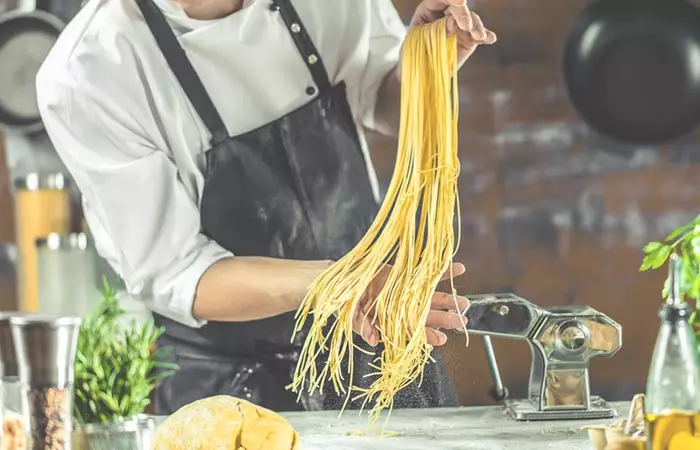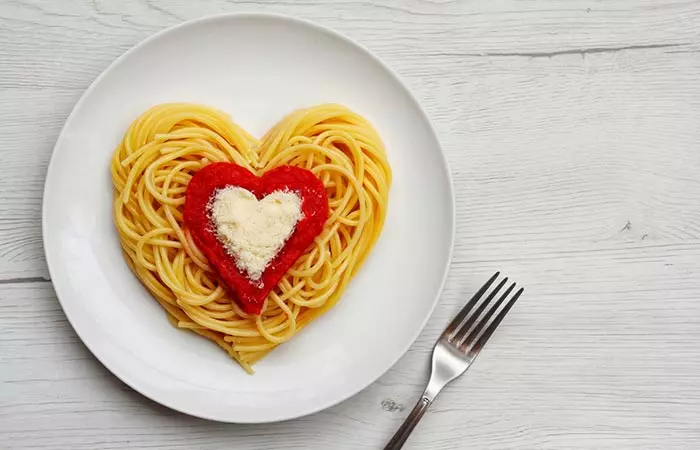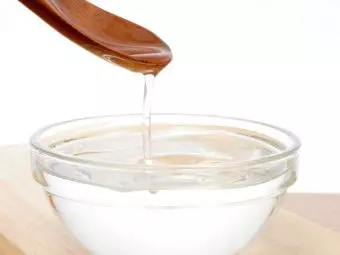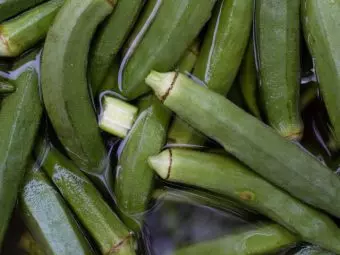Spaghetti is a thin, long, cylindrical pasta rich in carbohydrates. It is a staple of the Italian cuisine and is easy to prepare. The benefits of spaghetti are gaining popularity worldwide due to its rich vitamin and mineral content. It is made of milled wheat and water (like regular pasta) and is often served with meat or tomato sauce. Spaghetti might as well be your comfort meal any time of the day. In this article, we look at the nutrition profile, health benefits, certain delicious recipes, and possible side effects of spaghetti. Keep reading to know more.
In This Article
Know About Spaghetti

Shutterstock
Let’s check out some interesting facts about spaghetti that you may have never heard of.
- Thin spaghetti is known as capellini.
- Spaghettoni is the thicker version of spaghetti.
- Usually, pasta is white in color because of the use of refined flour.
- It is mostly available in lengths of 25 to 30 cm (10 to 12 inches).
- Fresh spaghetti is made by rolling out pasta sheets and cutting it into strips with a rolling pin and a knife. The use of a pasta machine simplifies the process and makes it uniform.
- Fresh spaghetti can usually be cooked within a few hours of being manufactured.
- Dried spaghetti is made using auger extruders. Newly-made spaghetti is dried with proper moisture control to prevent the strands from sticking while ensuring it’s not too dry and brittle.
Fun FactThe world record for the largest bowl of (6,251 kg) spaghetti is held by Buca di Beppo restaurant in Garden Grove, California, in 2010.
History Of Spaghetti
The first reference of pasta in history is from the 5th century with a reference to dried portable pasta that needed to be cooked by boiling. It was then made into long thin forms in the west around the 12th century. When spaghetti factories got established in the 19th century, spaghetti became more renowned all over Italy. This enabled mass production of spaghetti for people in Italy and then it further reached restaurants in the United States. Oregano or basil were not used in traditional spaghetti preparations for decades after. Now it is widely found in various kinds of culinary preparations all around the world.
Stylecraze TriviaJanuary 4th is celebrated as National Spaghetti Day in the United States.
Spaghetti Nutrition Facts
According to the USDA, 100 g of uncooked spaghetti by the brand SE GROCERS, provides us with the below nutrients (1).
|
Energy |
339 kcal |
|
Protein |
12.5 g |
|
Total lipid (fat) |
2.68 g |
|
Carbohydrate |
71.4 g |
|
Fiber |
8.9 |
|
Sugar |
3.57 |
|
Calcium |
35 mg |
|
Iron |
4.82 mg |
|
Sodium |
0 mg |
|
Vitamin C |
0 mg |
|
Fatty acids, total saturated |
0 mg |
|
Fatty acids, total polyunsaturated |
1.79 g |
|
Phosphorus |
446 mg |
|
Magnesium |
143 mg |
Spaghetti is a rich dietary source of carbohydrates and fiber along with other important vitamins and minerals. It has no saturated fats or sodium, to begin with. It has a significant amount of protein, calcium, phosphorus, and magnesium as well. When made with whole wheat, its nutrient value gets further enriched. Going further, let’s explore how these nutrients translate into the potential health benefits of spaghetti.
Potential Health Benefits Of Spaghetti
Pasta and spaghetti have been key ingredients in the Mediterranean diet. Now widely available all over the world, the benefits of spaghetti are more accessible to people everywhere. Let’s have a detailed look at a few of the key benefits of spaghetti below.
- Rich In Energy-boosting Carbohydrates
Spaghetti is made primarily with flour which is rich in carbohydrates, the primary source of energy (2). A spaghetti meal can thus give you that spurt of energy. Though some fad weight-loss diets advocate only the use of protein and fats, a no-carb diet might actually deprive you of essential nutrients (3). You can opt for whole wheat spaghetti to make it more nutritious with unrefined carbs and add in some lean meat protein or steamed vegetables to make it a wholesome meal.
Related: 12 Best Carbohydrate-Rich Foods And Their Benefits
- Rich In Dietary Fiber

Shutterstock
Whole wheat spaghetti has more fiber than any other regular pasta. Fiber helps keep your blood sugar levels in check and your digestive system healthy (4). Spaghetti can be a quick and easy option to meet your daily carbohydrate requirements. In case you are following a gluten-free diet, you can opt for spaghetti made of chickpeas or zucchini as well.
Related: Top 5 High-fiber Food Groups That You Should Eat Regularly
- Might Be Good For Your Heart

Shutterstock
Consumption of Mediterranean food like spaghetti might help maintain your cardiovascular health as well (5). That’s primarily because it doesn’t have any cholesterol or saturated fats and is low in sodium. An increase in serum cholesterol results in the formation of plaques inside the blood vessels leading to blockage (atherosclerotic cardiovascular disease-ASCD) and stroke (6).
A study on postmenopausal women who replaced starchy food items with a pasta meal intake reported a possible reduction in the potential risks of stroke and ASCD (7). If you can avoid high amounts of salt, cheese, or butter in its preparations, spaghetti can be a good meal option for you rather than any other high-cholesterol fat-ridden foods. Whole wheat variety of spaghetti would be an even better substitute than the regular flour pasta.
- Provides Protein And Micronutrients
One serving of spaghetti can give you 8g of protein and that’s about 16% of the Regular Diet Allowance (RDA) for adults (8). Along with that, it provides you with about 10% RDA of iron, 5% RDA of vitamin B-6, and 6% RDA of magnesium (1). Proteins and micronutrients play a vital role in building muscles, maintaining bone health, blood pressure regulation, and prevention of cancer and cardiovascular disease (9).
Related: 48 High-Protein Foods List To Include In Your Diet
Allergies And Interaction Of Spaghetti
Spaghetti with flour as its main ingredient is not suitable for people with gluten sensitivities.
Gluten is a kind of protein found in wheat, rye, and barley. While it is well tolerated by most people, it might cause problems for those who are allergic to it (10).
Also, people with celiac disease should avoid having regular pasta as gluten could trigger their immune response, damaging the cells of the small intestine (11). In such cases, you can opt for gluten-free varieties of spaghetti.
Spaghetti has a glorious history and is loved by almost everyone. If you’re new to it or you want to up your spaghetti game, here are a few tips and recipes that’ll come in handy.
Subscribe
Spaghetti Recipes And Preparation Tips
Spaghetti is a versatile food that can be enjoyed with a variety of sauces and toppings. You can make a simple low-fat meal by tossing it around in garlic and olive oil or make it a more elaborate affair by adding fresh garden vegetables, tomato sauce, and cheese. You can add in shrimps, chicken, or any lean meat to give you that extra boost of protein as well. Opting for whole-grain spaghetti along with the added meat and vegetables would make it a nutrient-rich satiating meal. Here are a few preparation tips to make your spaghetti meal more interesting:
- Follow the spaghetti packet instructions to cook. Usually, you should boil the spaghetti in a big colander till it is cooked “al dente” i.e. cooked through, but with a slight bite.
- You can try and make your own sauce with the flavors of ingredients you like. Alternatively, you can look for brands that make low-sodium pasta sauces.
- You can add mushrooms, lean meat, or extra veggies to add flavor and bulk to your meal without adding to the calories. You can also make a simple and plain spaghetti with olive oil and garlic— “Spaghetti Aglio e Olio” with a sprinkle of seaweed flakes to make it even more nutritious.
- If you are trying whole-wheat spaghetti for the first time, It might seem to have a slightly stronger flavor than regular pasta. You might not like it right away and may need some time to develop a taste for this healthier version.
Below we share a few popular recipes of spaghetti for you to make and relish anytime!
1. Spaghetti Aglio e Olio
Shutterstock
(Yields 4 servings)
Ingredients
- Spaghetti (uncooked) – 1 pound
- Garlic (thinly sliced) – 6 cloves
- Olive oil -½ cup
- Red pepper flakes -¼ teaspoon
- Salt and freshly ground black pepper – to taste
- Italian parsley (freshly chopped) – ¼ cup
- Parmigiano-Reggiano cheese (finely grated) – 1 cup
Instructions
- Take water in a large colander, add salt and bring it to a boil.
- Add the spaghetti to the boiling water, and cook for about 12 minutes, until the strands are firm with a slight bite.
- Drain the cooked spaghetti and transfer it to a pasta bowl.
- Cook garlic and olive oil in a skillet over medium heat for about 10 minutes, till the garlic, is roasted.
- When the olive oil begins to bubble, reduce the heat to medium-low.
- Cook for about 5 minutes more till the garlic turns golden brown.
- Remove from the heat.
- Sprinkle some salt, red pepper flakes, and black pepper and stir into the pasta.
- Drizzle the olive oil and garlic mixture on the spaghetti.
- Sprinkle some Italian parsley and half of the Parmigiano-Reggiano cheese
- Stir well until combined.
- Top and serve the pasta with the remaining grated cheese.
2. Spaghetti Carbonara
iStock
(Yields 4 servings)
Ingredients
- Spaghetti – 8 ounces
- Eggs (large) -2
- Parmesan cheese (freshly grated) -½ cup
- Bacon (diced) – 4 slices
- Garlic (minced) – 4 cloves
- Black pepper (freshly ground) – as per taste
- Kosher salt – as per taste
- Parsley leaves (freshly chopped) – 2 tablespoons
Instructions
- Cook pasta in a large colander of boiling salted water as per package instructions.
- Drain well and reserve about ½ cup of pasta water.
- Whisk together the eggs and Parmesan in a small bowl and keep aside.
- Heat a large skillet over medium-high heat.
- Add the bacon slices and cook for about 6-8 minutes until brown and crispy. Reserve the excess fat.
- Stir in the garlic and cook for a minute, until fragrant, about 1 minute. Reduce the heat to low.
- Stir in the egg and pasta mixture, and gently toss around to combine well.
- Season with salt and pepper as per your taste.
- Add the reserved pasta water, one tablespoon at a time, until the desired consistency is reached.
- Garnish with parsley and serve in a pasta bowl.
Spaghetti is a popular pasta variety made from durum wheat. It is rich in carbohydrates and contains many vitamins and minerals. The many benefits of spaghetti can be attributed to its rich nutrition profile. The intake of this pasta variety may improve digestion, maintain bone health, and reduce the risk of cancer and heart disease. In addition, you can prepare many recipes with spaghetti easily at home. However, it is not suitable for people with gluten sensitivities. Hence, add it to your diet and consume it in moderation to enjoy its benefits.
Frequently Asked Questions
Is eating spaghetti every day good?
If made from whole grain flour and not refined flour, consuming spaghetti can help support good health. However, moderation is advised.
Can spaghetti make you gain weight?
Controlling portion sizes and reducing variants with processed ingredients can help manage weight (14). But excess intake of spaghetti, especially the refined variants, can cause weight gain.
Key Takeaways
- Spaghetti is rich in fiber, protein, and minerals like calcium, iron, phosphorus, and magnesium.
- More importantly, it does not contain any cholesterol and saturated fats.
- Whole wheat spaghetti is richer in nutrients and contains unrefined carbs.
- However, those with gluten sensitivities must avoid eating it.
Sources
Articles on StyleCraze are backed by verified information from peer-reviewed and academic research papers, reputed organizations, research institutions, and medical associations to ensure accuracy and relevance. Read our editorial policy to learn more.
- SPAGHETTI
https://fdc.nal.usda.gov/fdc-app.html#/food-details/552685/nutrients - Carbohydrates as a source of energy
https://pubmed.ncbi.nlm.nih.gov/8116550/ - Ketogenic diets: Boon or bane?
https://www.ncbi.nlm.nih.gov/labs/pmc/articles/PMC6251269/ - Dietary fiber and prebiotics and the gastrointestinal microbiota
https://www.tandfonline.com/doi/full/10.1080/19490976.2017.1290756 - Benefits of the Mediterranean Diet: Insights From the PREDIMED Study
https://pubmed.ncbi.nlm.nih.gov/25940230/ - Physiology Cholesterol
https://www.ncbi.nlm.nih.gov/books/NBK470561/ - Pasta meal intake in relation to risks of type 2 diabetes and atherosclerotic cardiovascular disease in postmenopausal women: findings from the Women’s Health Initiative
https://nutrition.bmj.com/content/early/2021/05/16/bmjnph-2020-000198 - Dietary Reference Intakes (DRIs): Recommended Dietary Allowances and Adequate Intakes Total Water and Macronutrients
https://www.ncbi.nlm.nih.gov/books/NBK56068/table/summarytables.t4/?report=objectonly - Higher Protein Density Diets Are Associated With Greater Diet Quality and Micronutrient Intake in Healthy Young Adults
https://www.ncbi.nlm.nih.gov/labs/pmc/articles/PMC6514148/ - Non-celiac gluten sensitivity: literature review
https://www.ncbi.nlm.nih.gov/pubmed/24533607 - Celiac Disease and Non-celiac Wheat Sensitivity: State of Art of Non-dietary Therapies
https://www.frontiersin.org/articles/10.3389/fnut.2020.00152/full - Pasta cooked unenriched without added salt
https://fdc.nal.usda.gov/fdc-app.html#/food-details/168928/nutrients - Rice white medium-grain cooked unenriched
https://fdc.nal.usda.gov/fdc-app.html#/food-details/168930/nutrients - Pasta Consumption Is Linked to Greater Nutrient Intakes and Improved Diet Quality in American Children and Adults, and Beneficial Weight-Related Outcomes Only in Adult Females
https://www.ncbi.nlm.nih.gov/pmc/articles/PMC7426435/
Was this article helpful?
Related
The following two tabs change content below.
- Author

Varsha Patnaik
Varsha holds a master’s degree in biotechnology from Ravenshaw University, Cuttack, and is a certified diet and nutrition coach. She… more



 Is Coconut Meat Good For Your Health?
Is Coconut Meat Good For Your Health? 5 Benefits Of MCT Oil And The Best Ways To Use It In A Keto Diet
5 Benefits Of MCT Oil And The Best Ways To Use It In A Keto Diet Winter Melon: Nutrition, Benefits, Side Effects, & Precautions
Winter Melon: Nutrition, Benefits, Side Effects, & Precautions Shiitake Mushrooms: Nutritional Information, Benefits, And Side Effects
Shiitake Mushrooms: Nutritional Information, Benefits, And Side Effects Health Benefits Of Purple Yam You Must Know About
Health Benefits Of Purple Yam You Must Know About Top 5 Health Benefits Of Scallop And Its Nutrition Facts
Top 5 Health Benefits Of Scallop And Its Nutrition Facts 5 Important Health Benefits Of Okra Water Backed By Science
5 Important Health Benefits Of Okra Water Backed By Science Cucumber Juice: Benefits, Nutrition, And More
Cucumber Juice: Benefits, Nutrition, And More 9 Amazing Health Benefits Of Donkey Milk You Need To Know About
9 Amazing Health Benefits Of Donkey Milk You Need To Know About